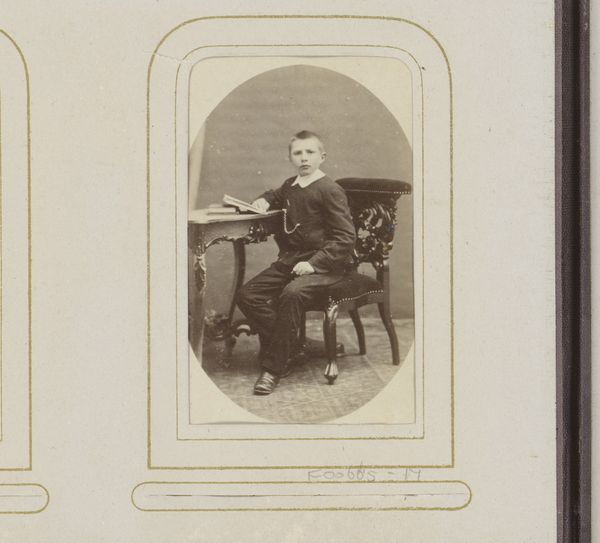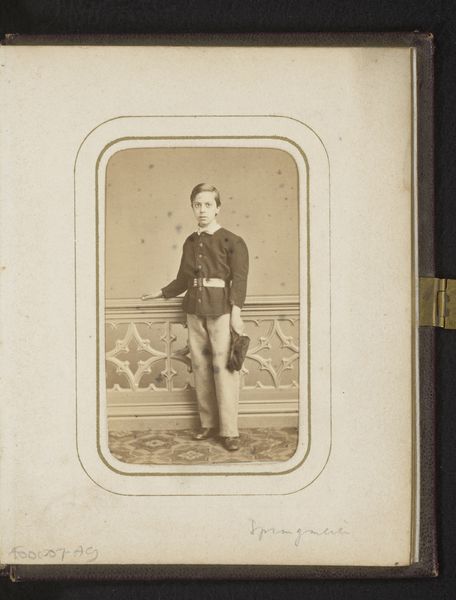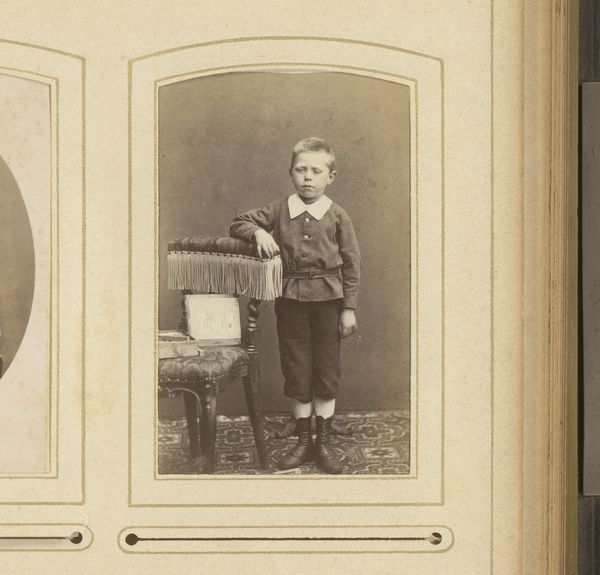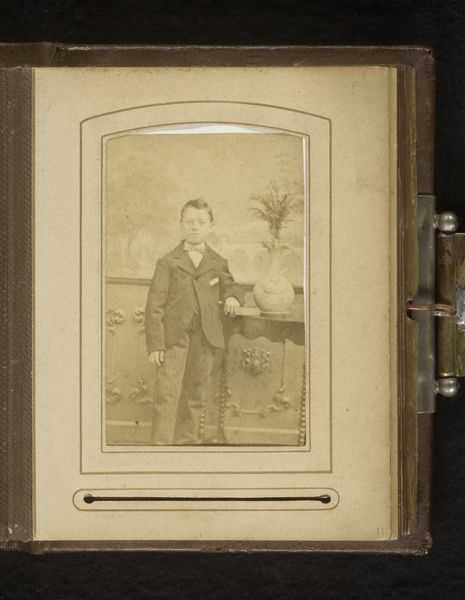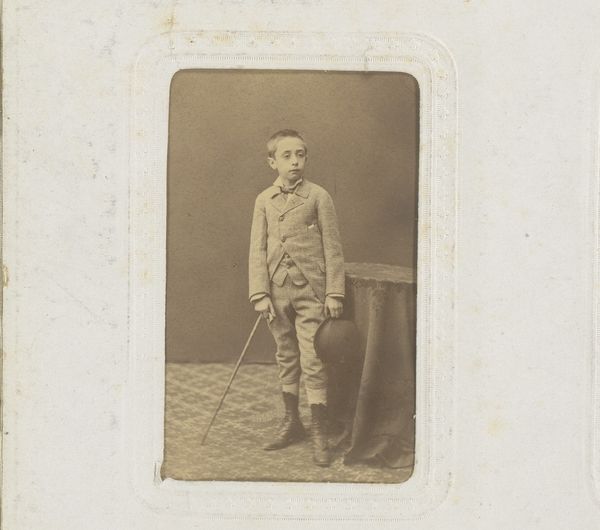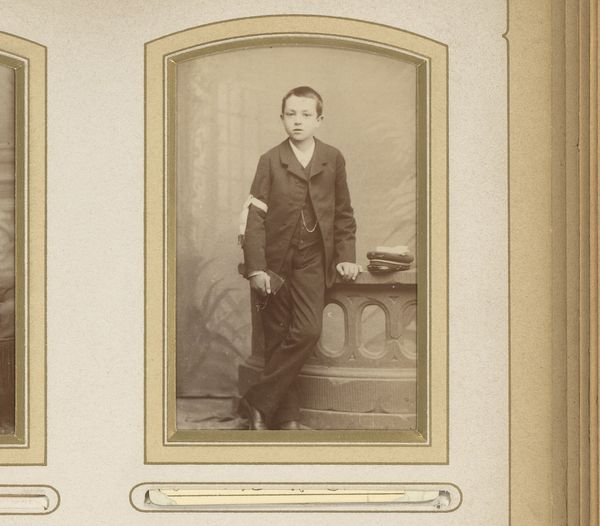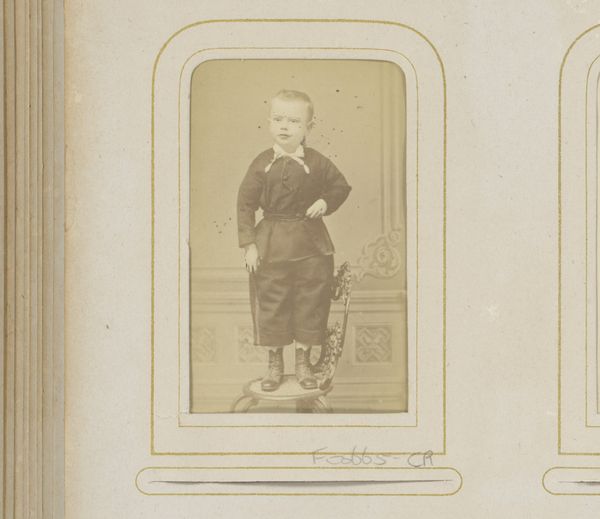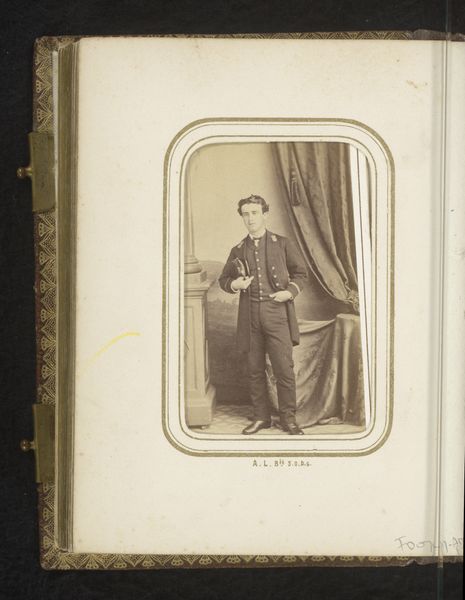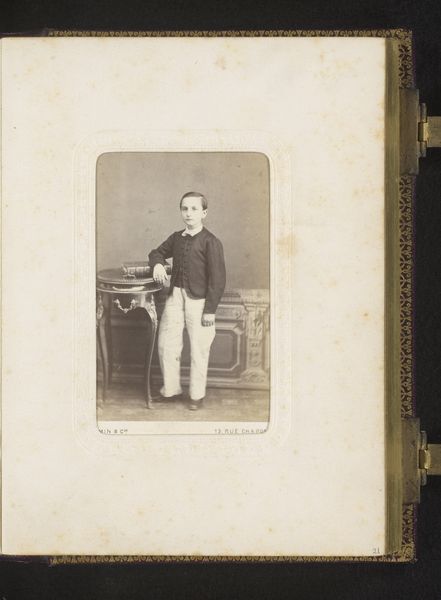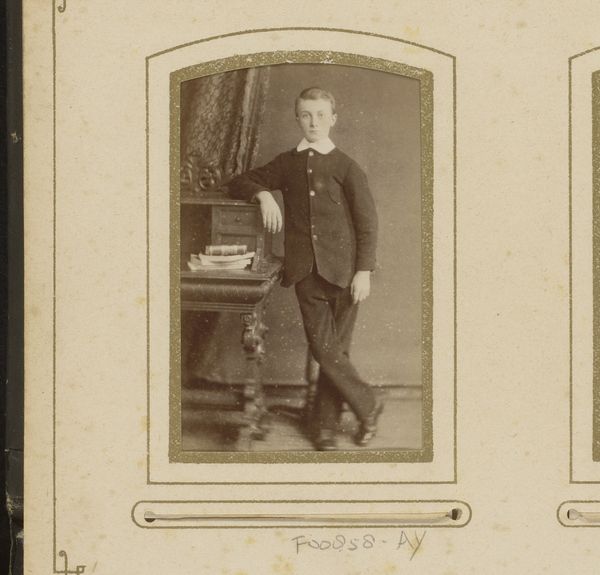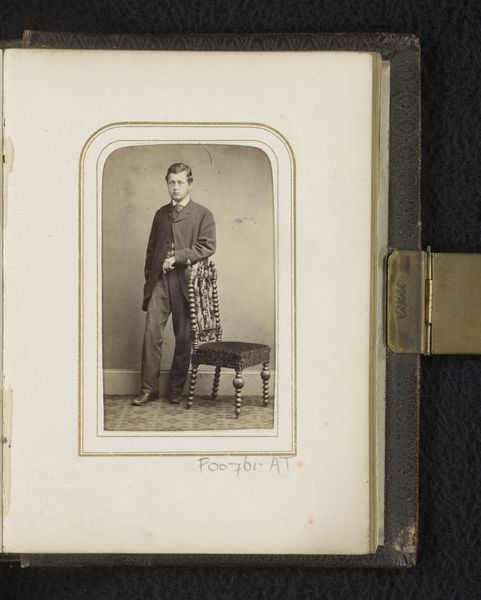
photography
#
portrait
#
photography
#
historical photography
#
genre-painting
Dimensions: height 84 mm, width 52 mm
Copyright: Rijks Museum: Open Domain
Editor: Here we have a vintage photograph by Louis Sauvager, likely from sometime between 1860 and 1900. It's titled "Portrait of a Standing Boy with a Roll of Paper in his Hand." I'm struck by the boy's formal attire. It makes me wonder about his social class, but the roll of paper adds an intriguing element, making me curious what it represents. What do you see in this image? Curator: I’m immediately drawn to the image's historical context. Consider the era. Photography was relatively new, and portraits like this were often signifiers of status and aspirations. The boy's clothes—almost a uniform—speak volumes about societal expectations for young men of a certain class. Editor: It's like he's being positioned to follow a certain path. Curator: Exactly! The roll of paper is not just a prop; it may symbolize learning, profession, or perhaps even privilege. What does it mean to depict a child like this? Is it merely a family memento, or a deliberate statement about the future the parents envision for their son? Also, let's consider absence. Where are the depictions of children from lower classes during that time? What can it say about representation? Editor: So the photograph isn't just about this one boy, but it can represent the power dynamics of that time? Curator: Precisely! Images like this invite us to reflect on the power structures inherent in portraiture, photography's role in reinforcing those structures, and also about historical power and class representation. How might we use this to understand inequalities of our society today? Editor: I never considered the class aspect so deeply. This photo offers an interesting look into that time. Thanks for the analysis! Curator: My pleasure! Analyzing art with this perspective reveals so much.
Comments
No comments
Be the first to comment and join the conversation on the ultimate creative platform.

